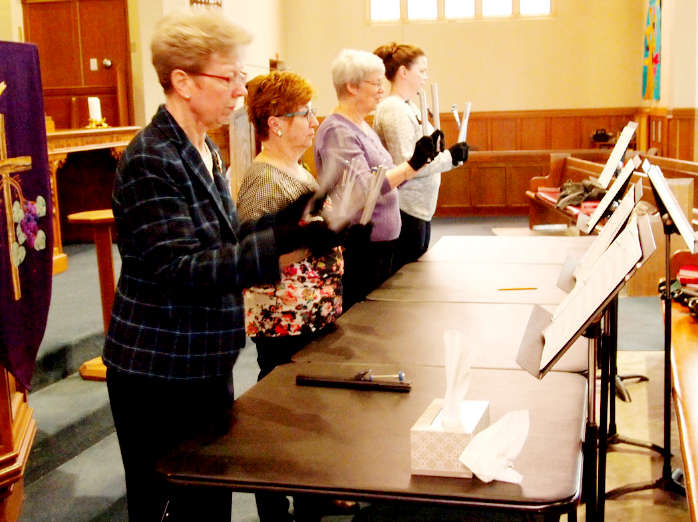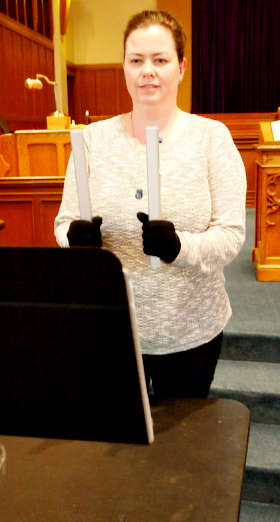
One of the special offerings at Knox are the Chimes. Here are a few photos of some of the group in rehearsal. “Imagine you are in a choir and each person in that choir has to sing a single note – that is what playing the chimes is like,” explains director Madelene.
You can hear her gently instructing the group members to COUNT and not to listen to their own hearts beating – Sundays in the sanctuary after coffeetime.


